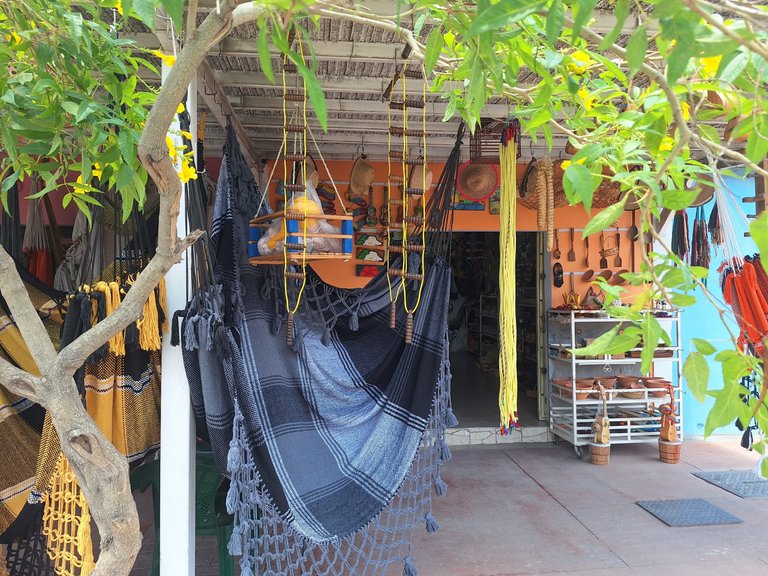
Traveling will always make sense to me; it is a personal construction and also a memorable moment. Now, the state of Lara is divided into 8 municipalities; one of them is Jiménez, where the artisan village of Tintorero is located. To get to this place from Barquisimeto, where I live, you have to take Highway 17. It is about 28 kilometers away, approximately 37 to 40 minutes in a private car.
I haven't been to the artisan village of Tintorero since I was about 15 years old. A long time, right? This time, we left at about 10:40 am, Venezuela time.
As we drove along the road, there were a few police posts and also structures made of dried reeds where they sold budares and ovens to make Venezuelan arepas (this was less prevalent than years ago). As the car drove on, the transition from city to rural and traditional village began.
Tintorero is one of the driest towns in the state of Lara, so drought prevails, despite the fact that the land is rich for planting. My grandmother used to tell me when I was younger that the surrounding area was always full of crops. That has changed.
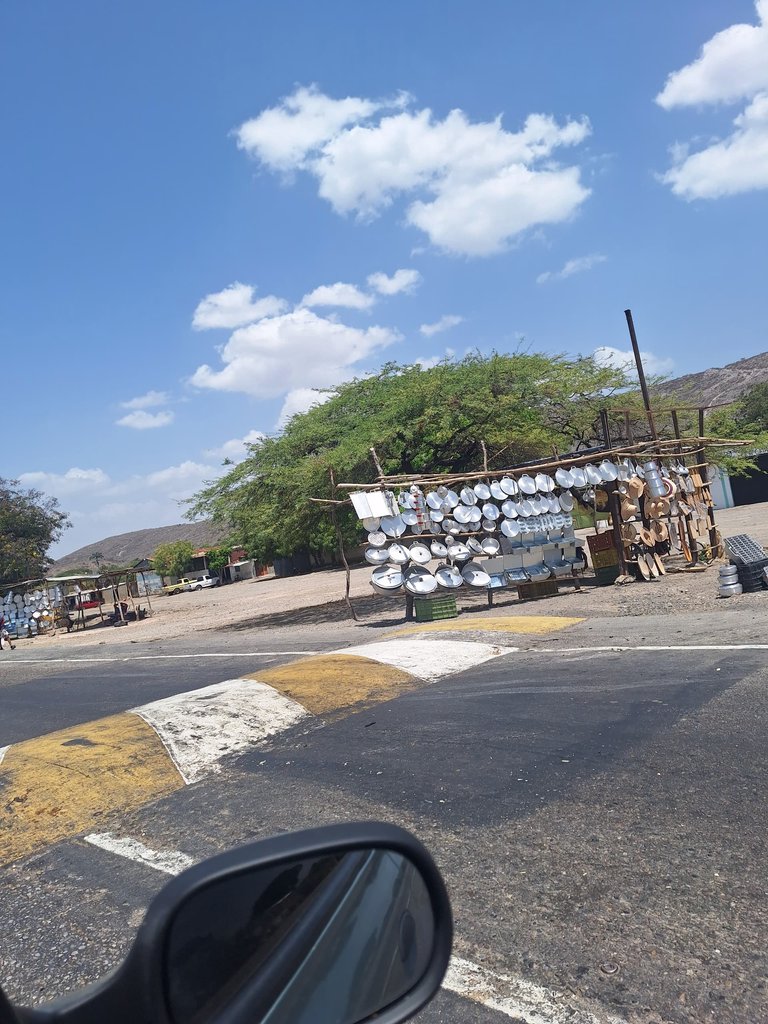 | 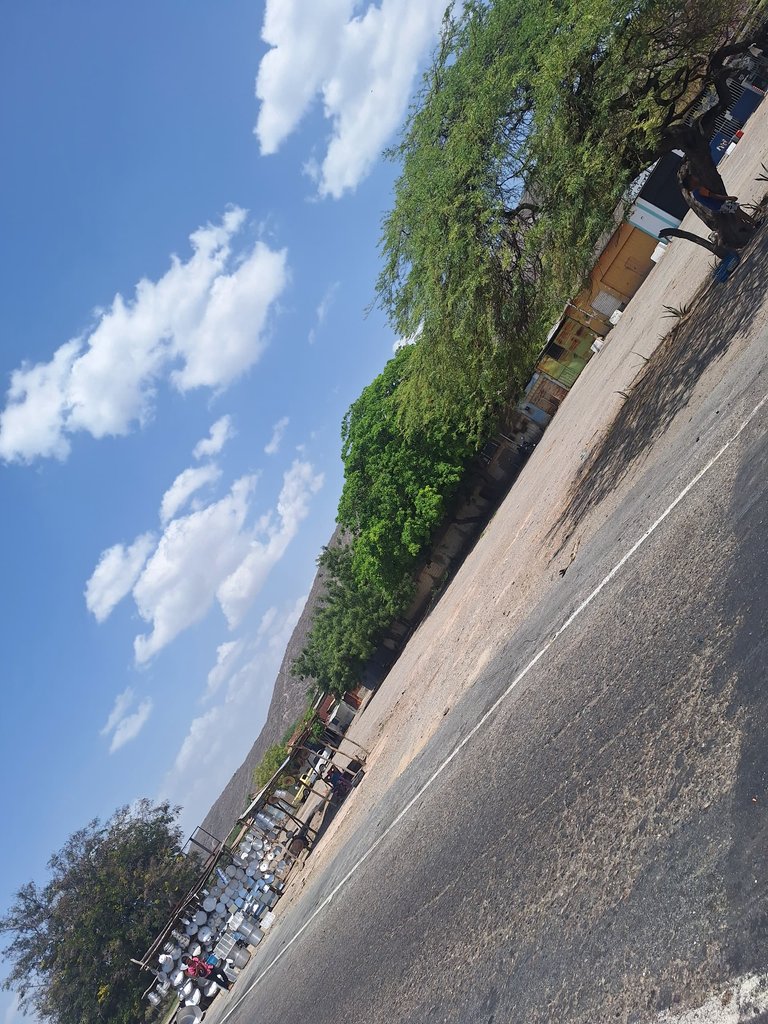 |
|---|
I arrived in Tintorero after 11:20 am. The first thing we did was to park the car in the streets of the village. As it was Wednesday, a weekday, the town was not very busy. There were not many people, nor was it the time of the tourist season or high sales.
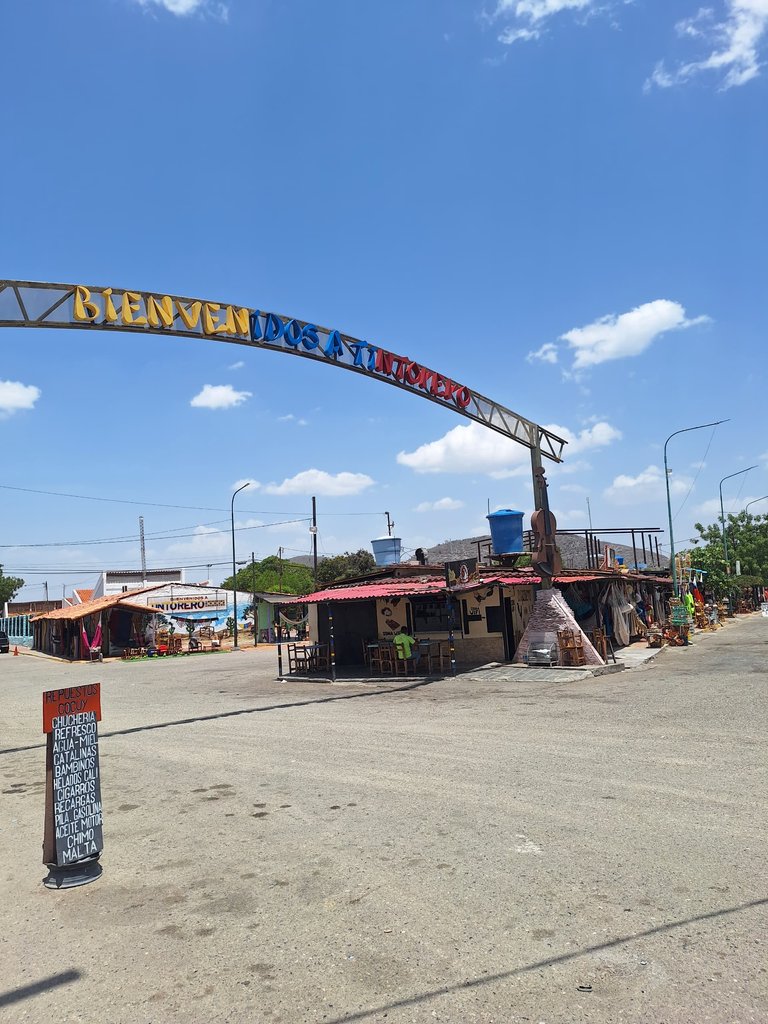 | 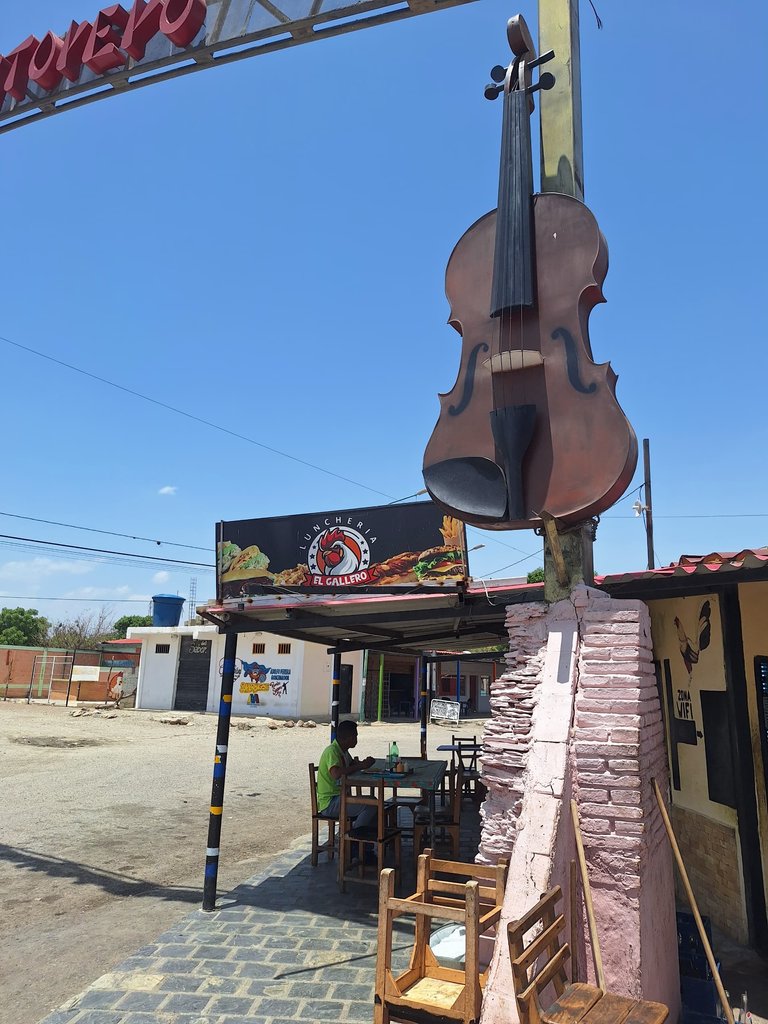
| 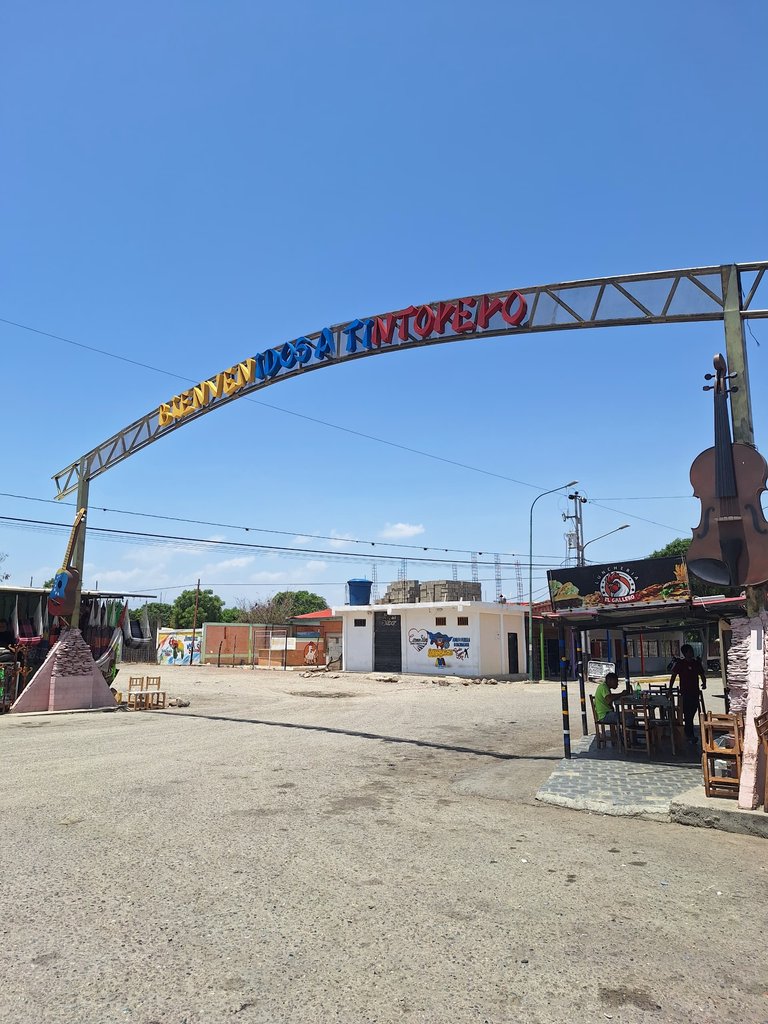
|
|---|
One thing I will point out about this village is the predominance of the coloring; it is too colorful. Therefore, it envelops you. I am referring to what you see in the image below:

The first place we visited was surrounded by hammocks, hats and handicrafts. In front of it were benches, casually painted yellow. Most of the houses in this village are made of mud or bahareque.
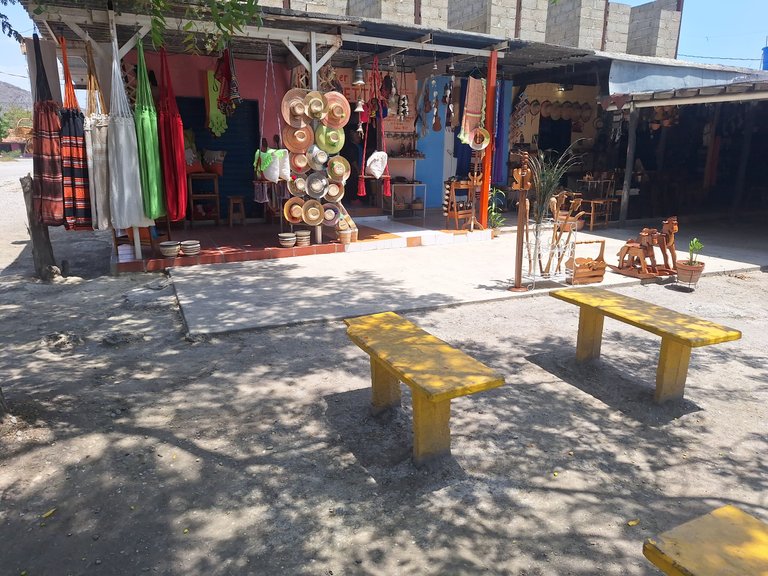
Being a handicraft village, you can find all kinds of souvenirs. In my case, I wanted to buy a hammock, but not just any hammock. My wish was to buy an elegant one. I don't like things that don't have this characteristic.
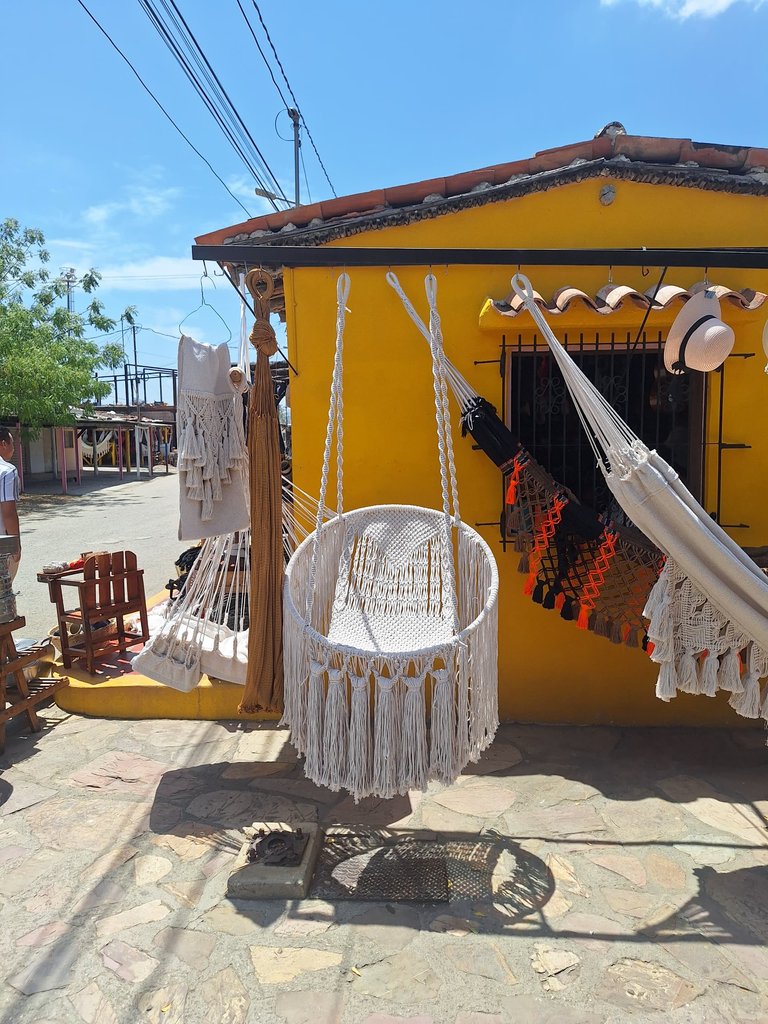 | 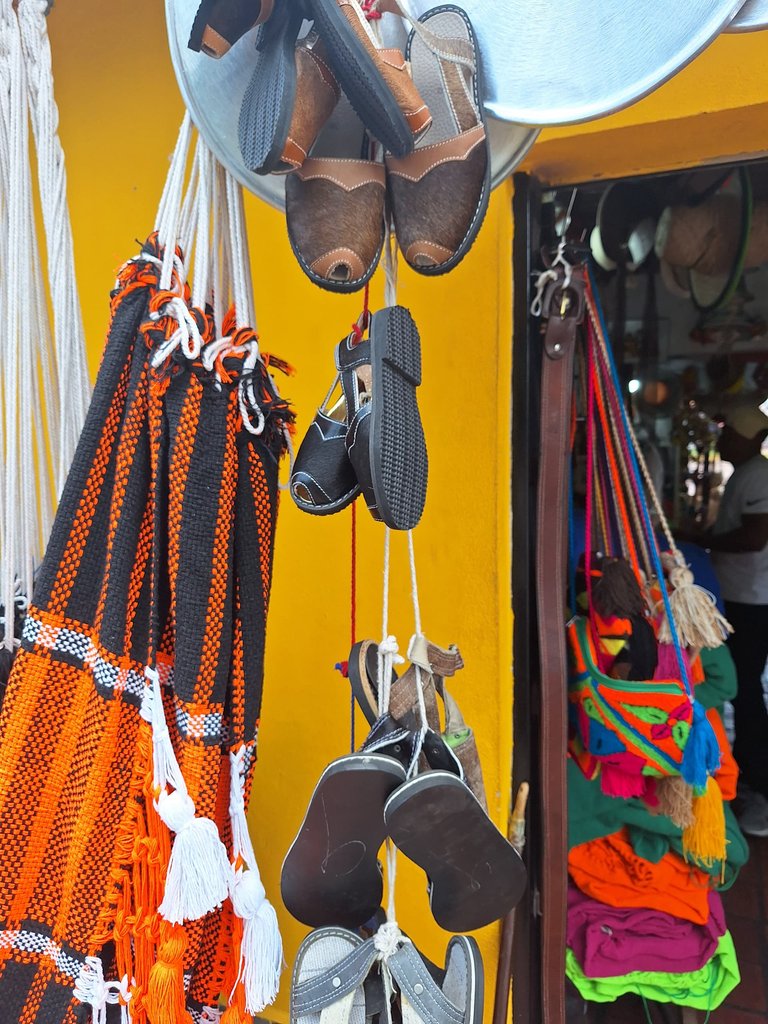
| 
|
|---|
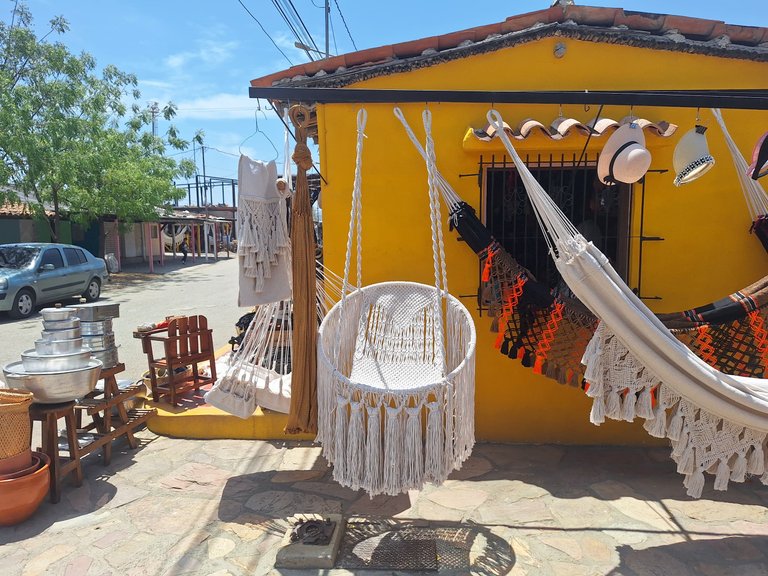 |
|---|
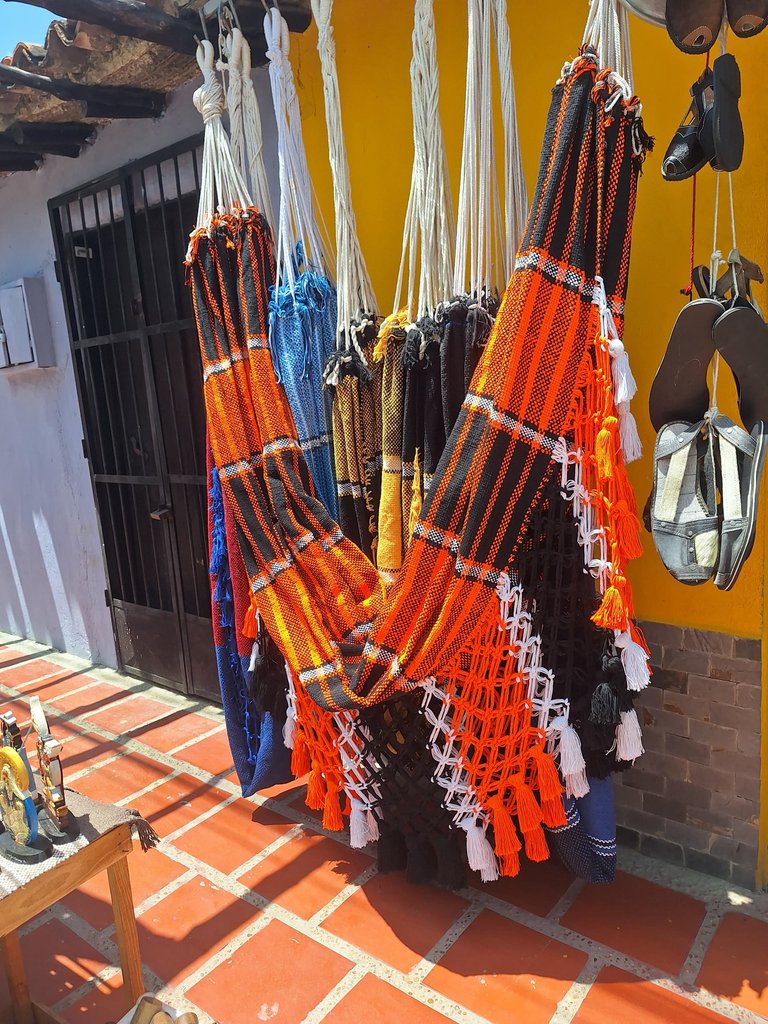 | 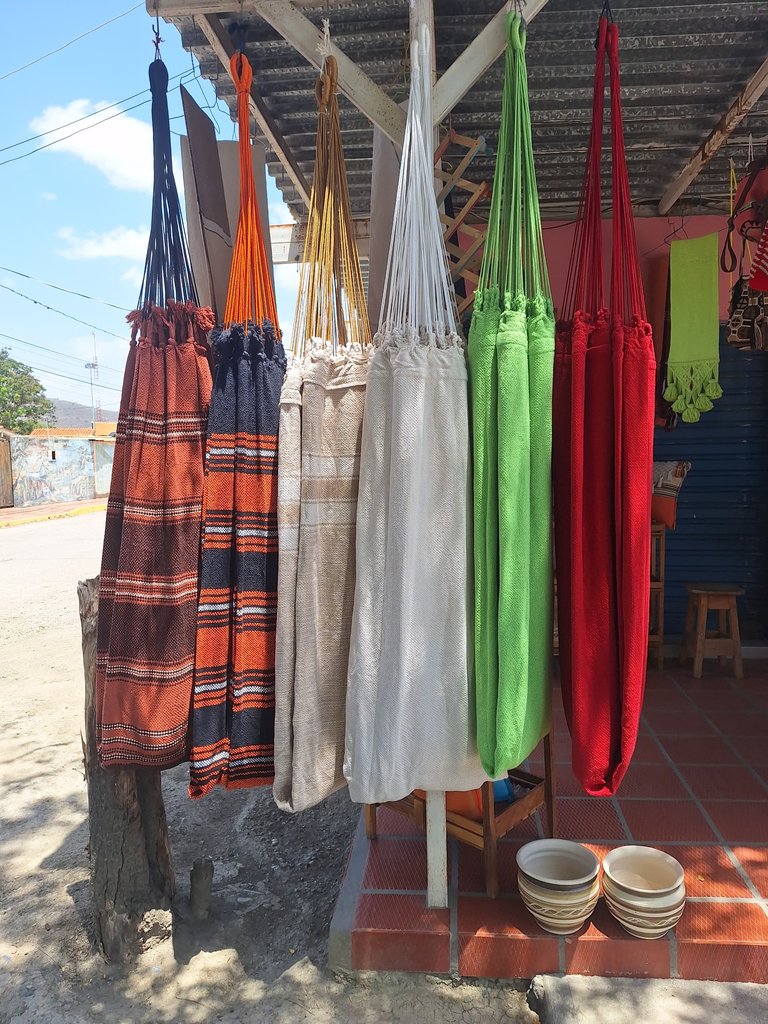
| 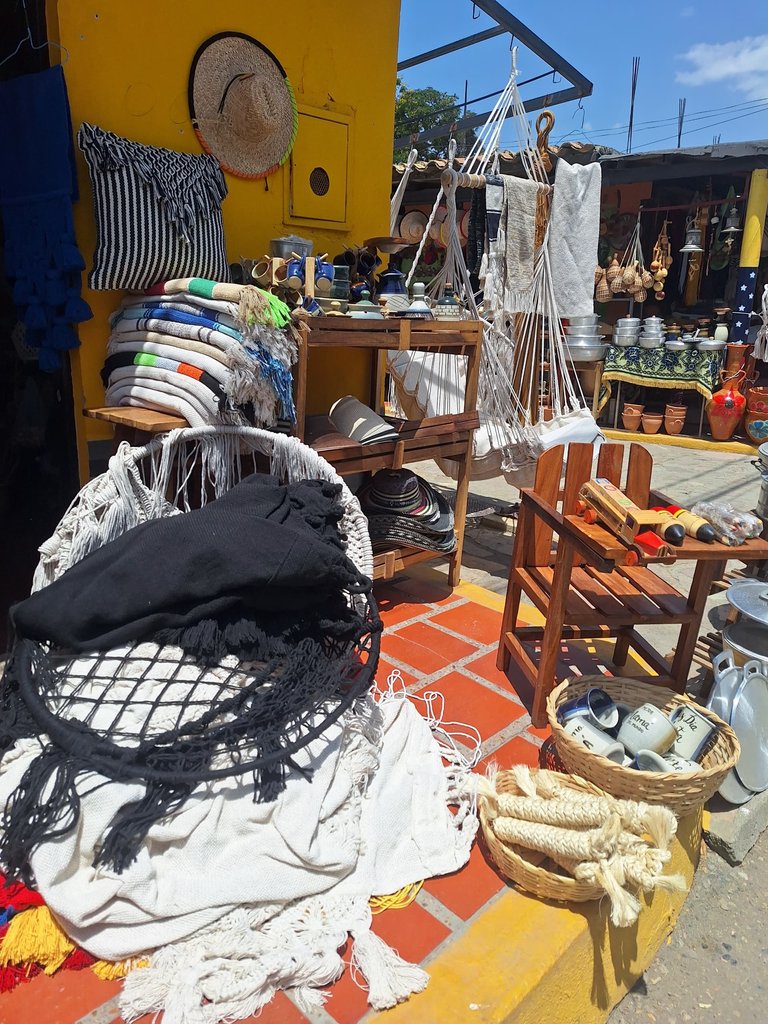
|
|---|
In the first shop in the handicraft village, I was very well looked after; they showed me all kinds of articles, and there were even hanging chairs. It was beautiful. Outside the colonial house, there was a lot of merchandise made with delicacy and care.

As I really liked the effect of placing the merchandise outside the houses, I took advantage of it and took pictures of the profile to show the colorful facades of the village.
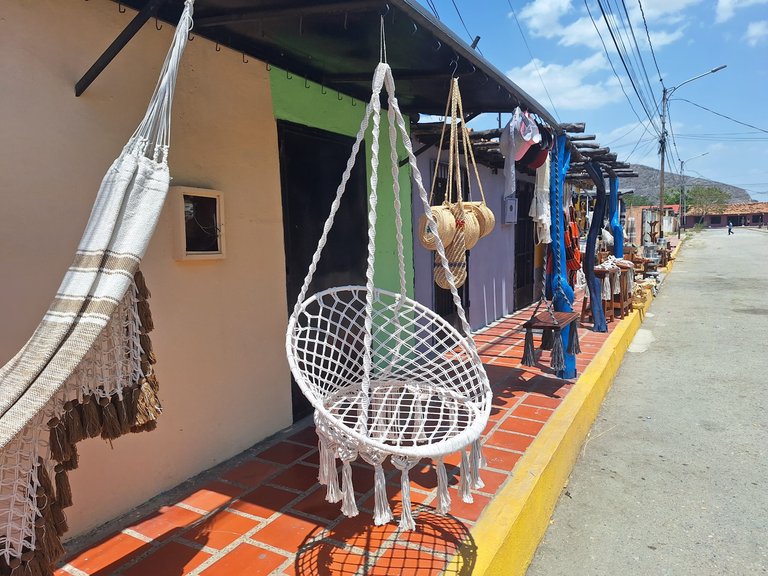
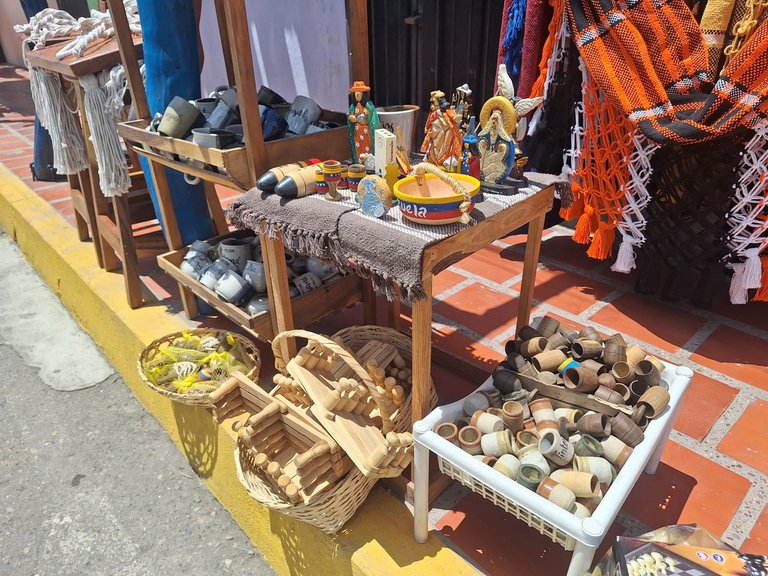
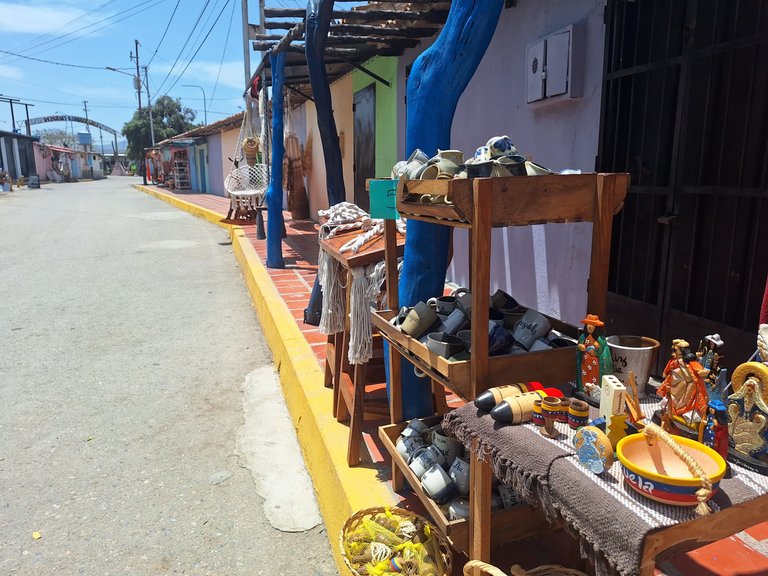
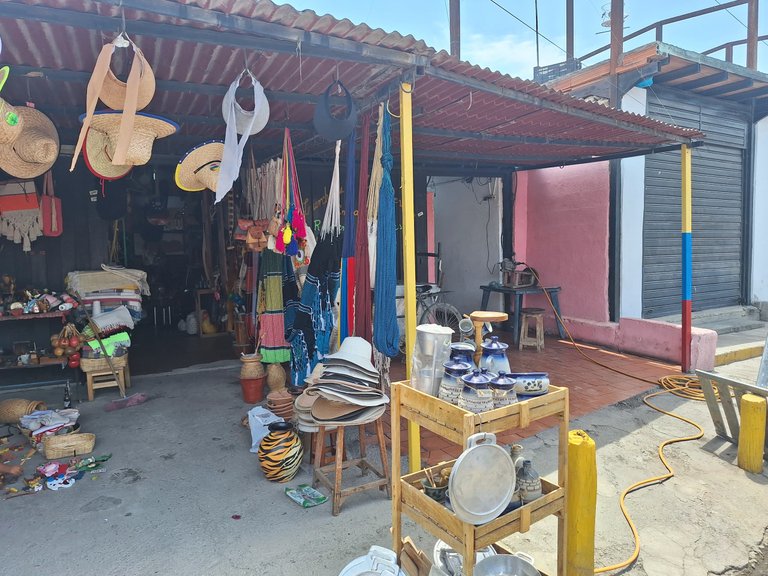
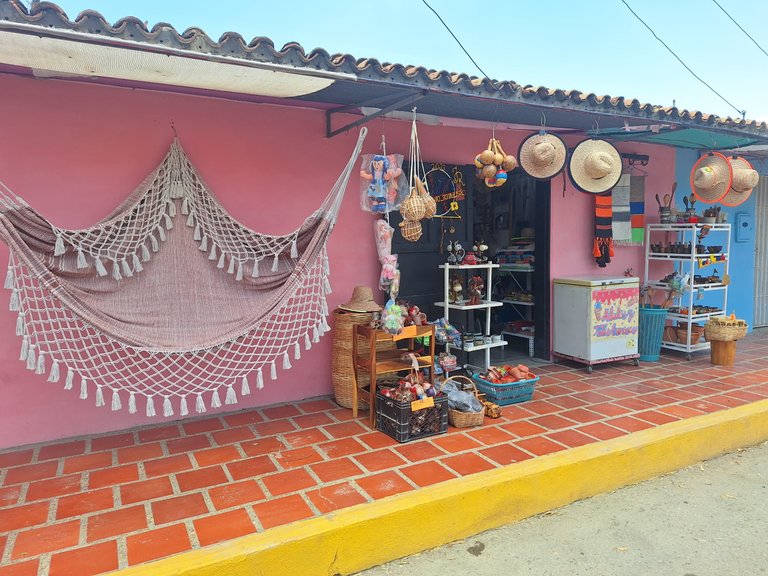
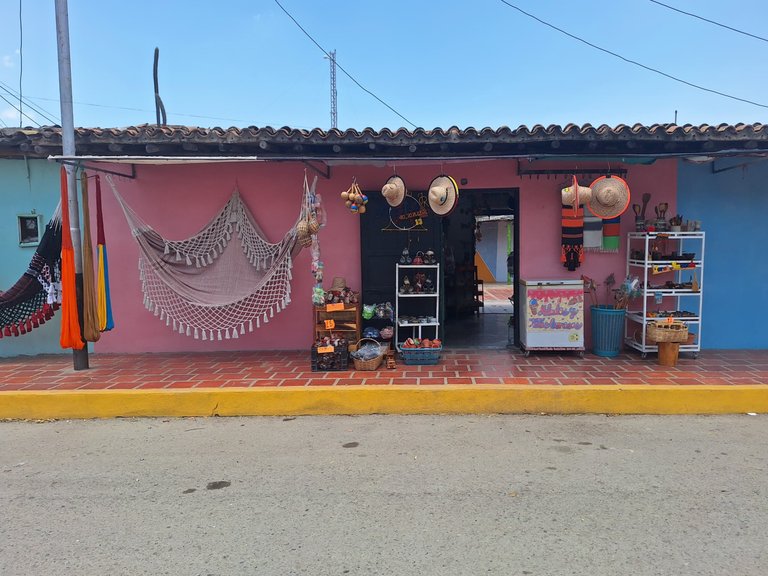
As I walked into the first craft shop, I was amazed. There were so many beautiful things, and when you got to the end, you were directed to a kind of small square. That is to say, a kind of double entrance.
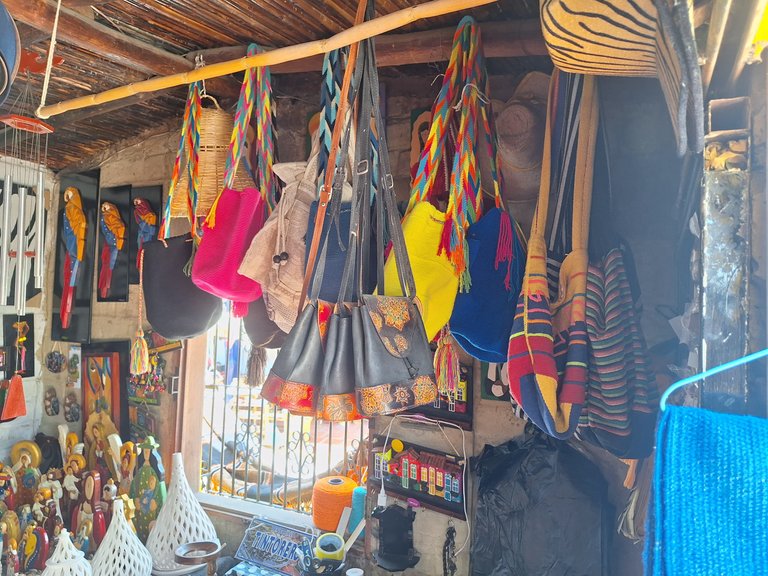
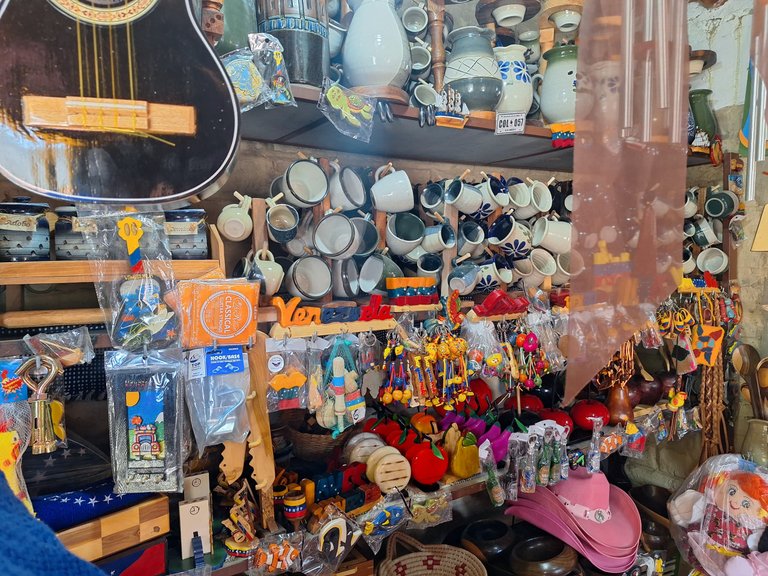

The architecture of the artisan village of Tintorero is evidently colonial, and from the early years of the Venezuelan republic. The characteristic of this village is that it was founded between the end of the 19th century and the beginning of the 20th century, but the preceding architecture was used. It's interesting, isn't it?
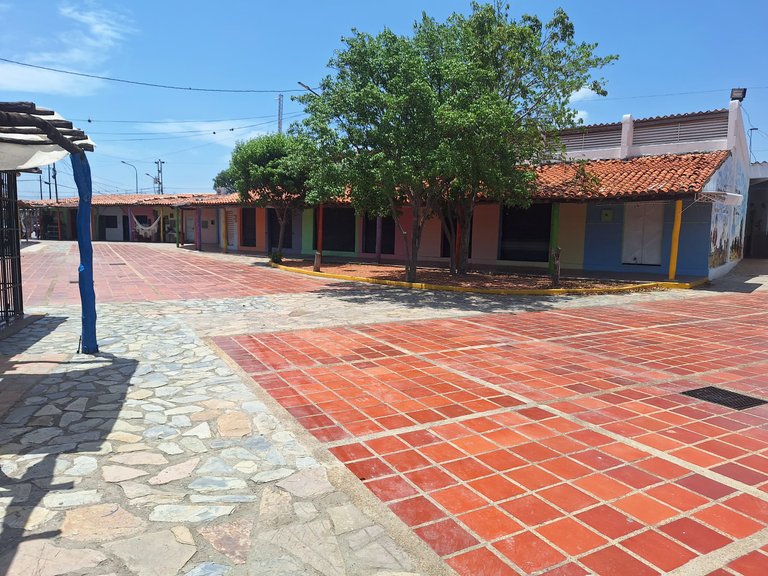
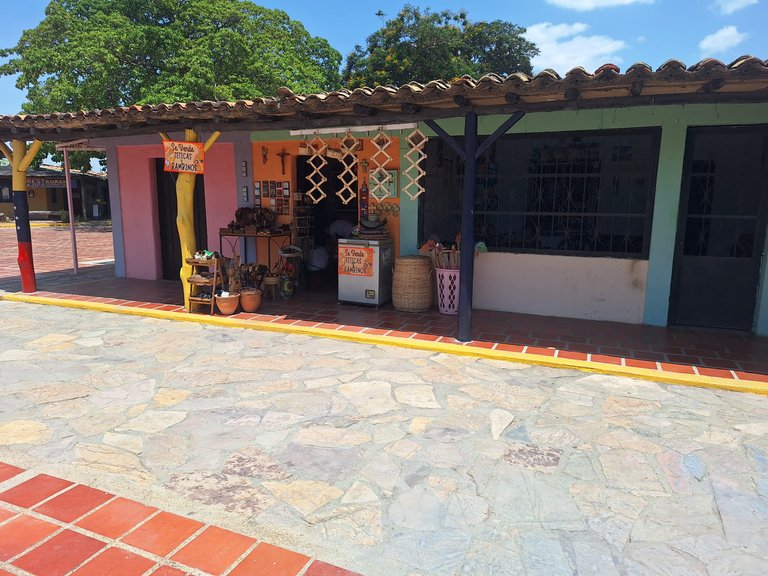
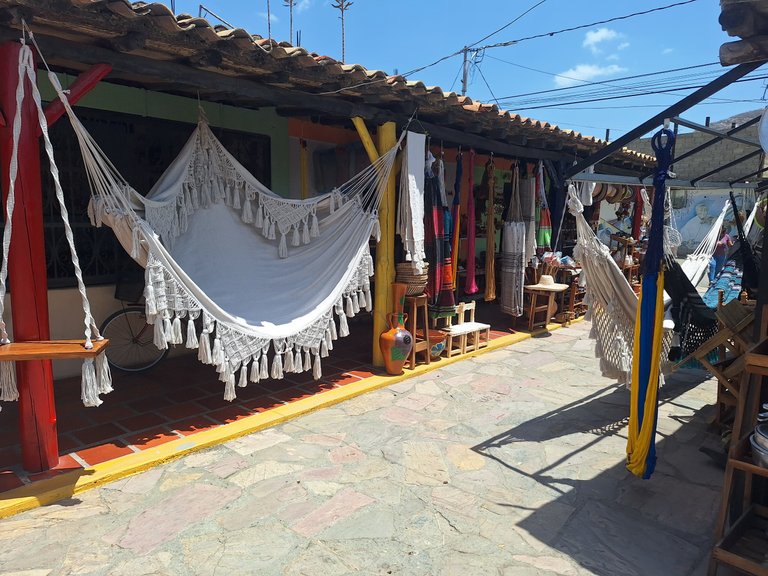
The history of Tintorero is intertwined with the city of the Tocuyo, one of the oldest cities in Venezuela, which should be a world heritage site and have a higher rate of development, but was suspended in time. Being close to cities, there is a high influence on weaving, handicrafts and pottery making.
As I continued to walk around the village, I also found kitchenware, coffee cups, budares and ovens for making Venezuelan arepas. The arepa is the typical dish of my country, usually eaten for breakfast and dinner. That's why you can often find them everywhere.
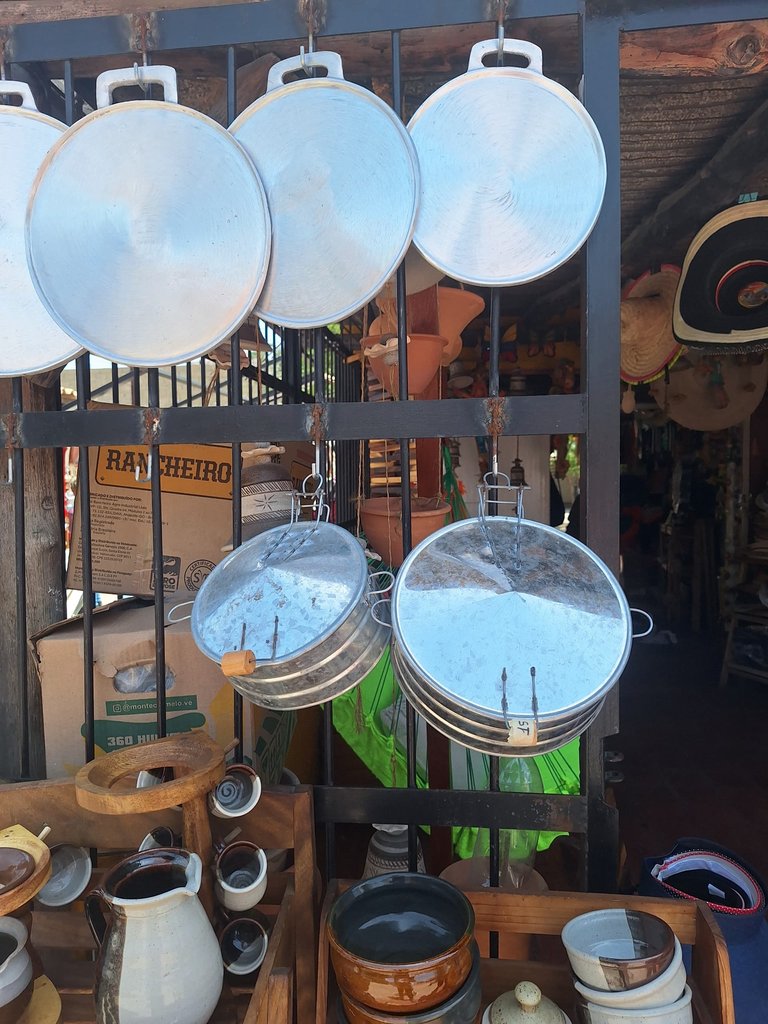
I went to another shop that had a more sober look, but where brown merchandise was plentiful.
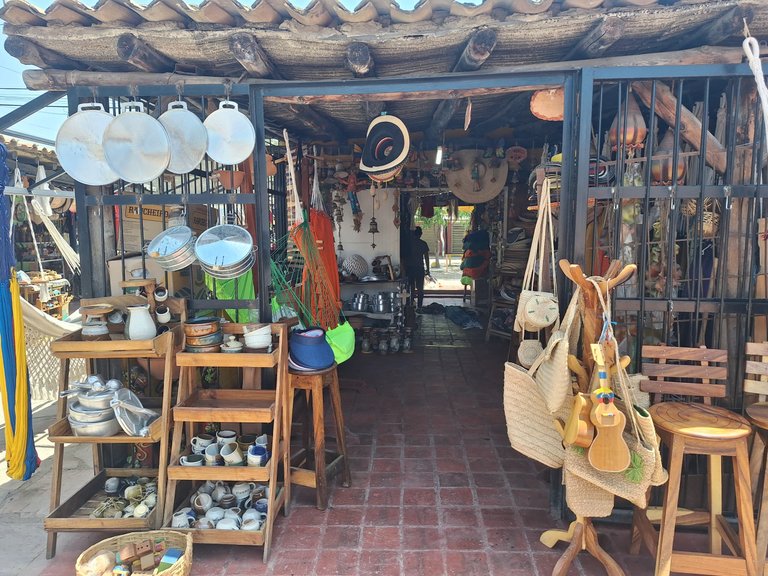
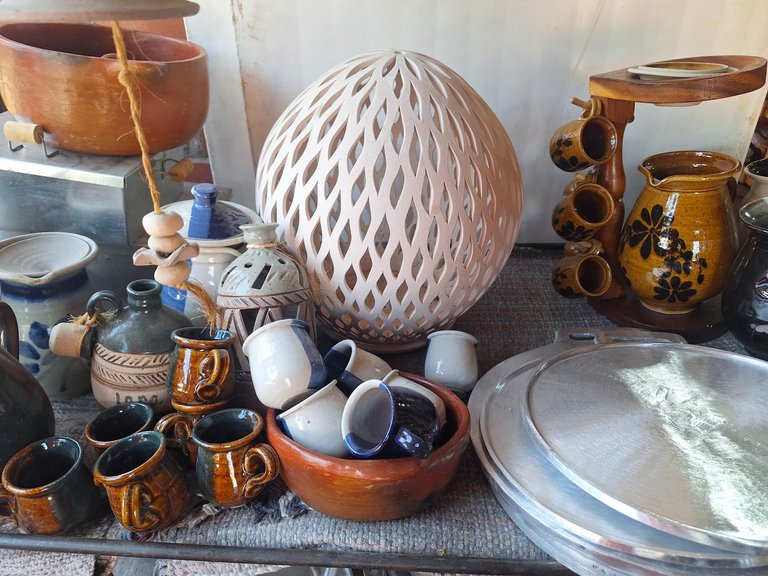
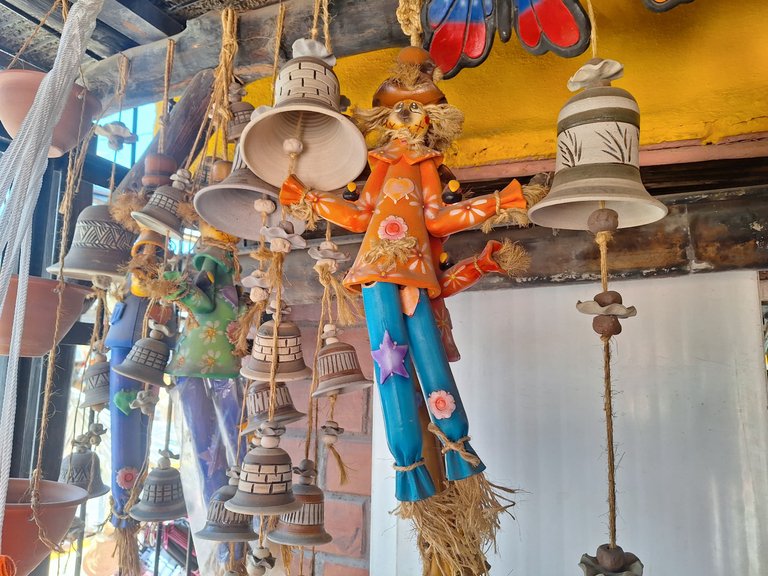
I continued my tour of the village of Tintorero, and the handicrafts, hats, maracas and wooden chairs were predominant. All meticulously made.
As you walk through the corridors that intertwine the colonial houses, the ceilings have all kinds of hanging wares. It is a unique attraction of that place; it has its essence and magic.
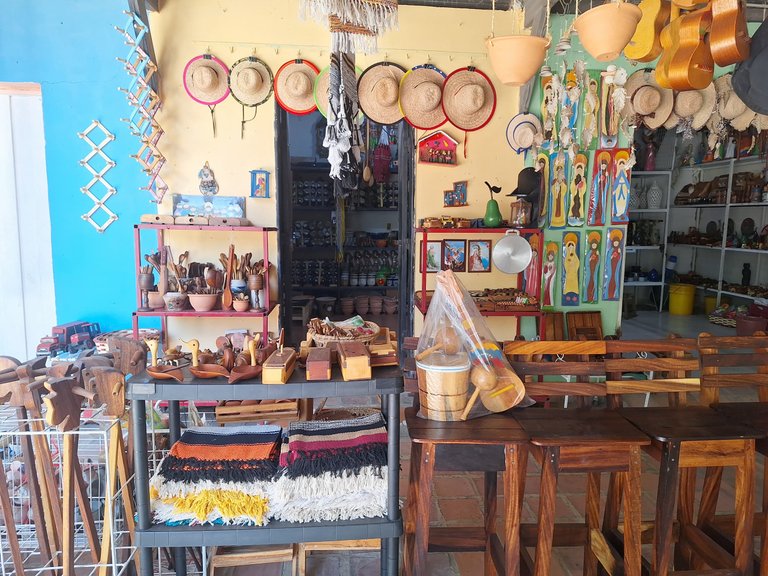
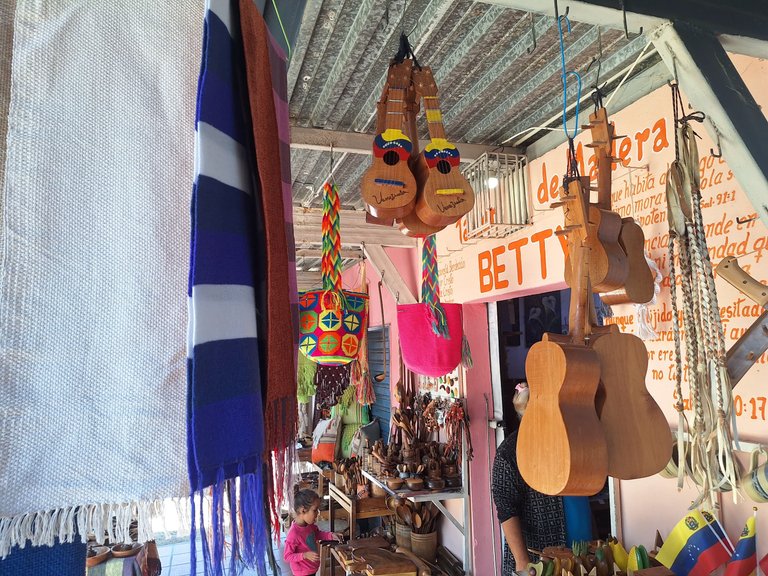
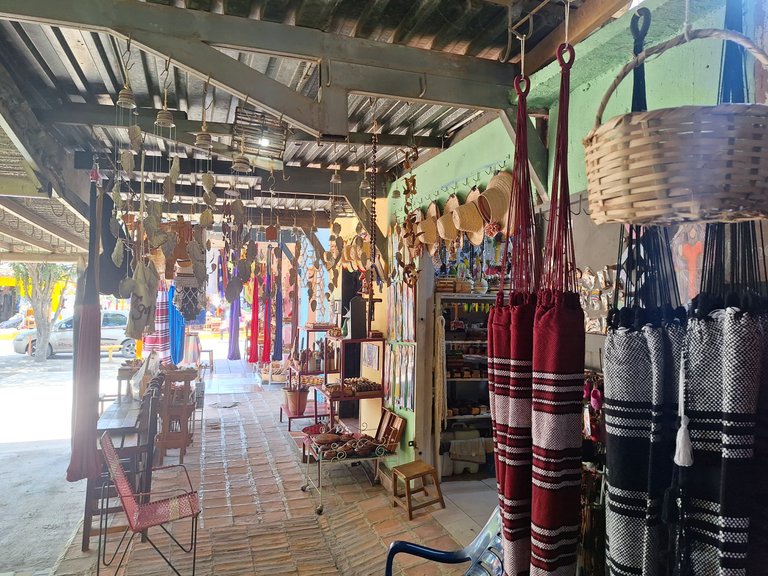
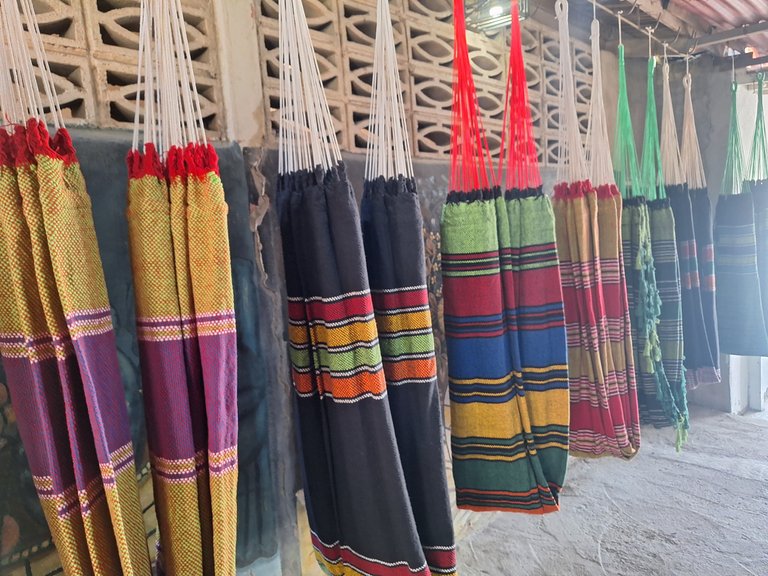
The hammocks are also hung linearly, and the artisans take great care in the way the product is perceived. You can feel the artistic touch.
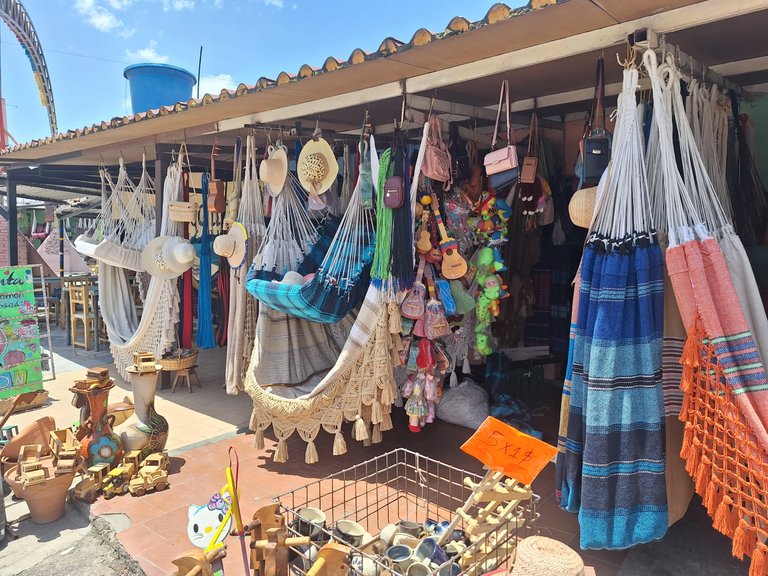
I also noticed that many shops were closed, which is normal in a period when there are few tourists, but there is also the cost of the country risk. The crisis caused many shops to close, that's what some of the artisans told me.
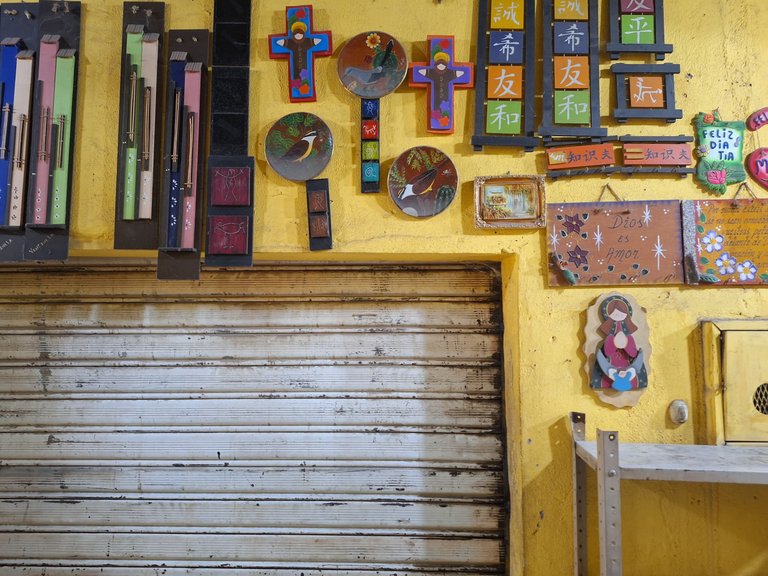


One impressive thing is to be immersed in the weaving of hard-working people; you feel like you are in another place. I really liked that aspect. To make it more precise, you have to look at the followings images:
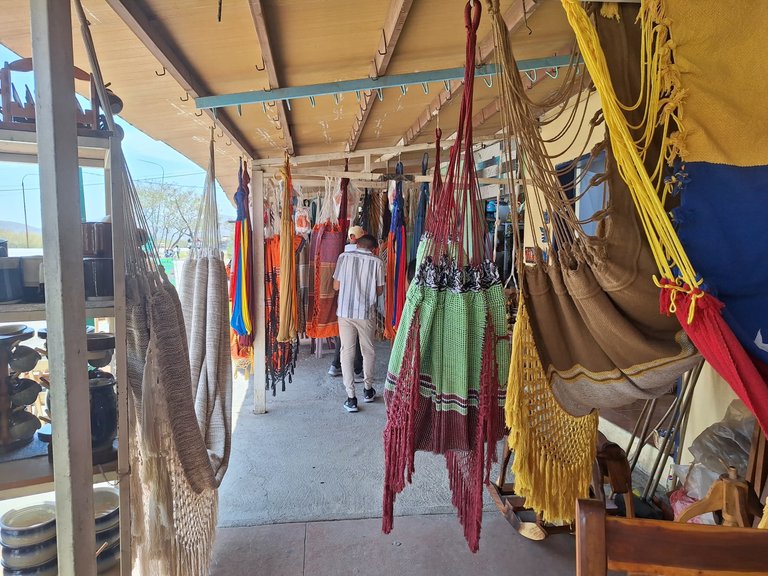
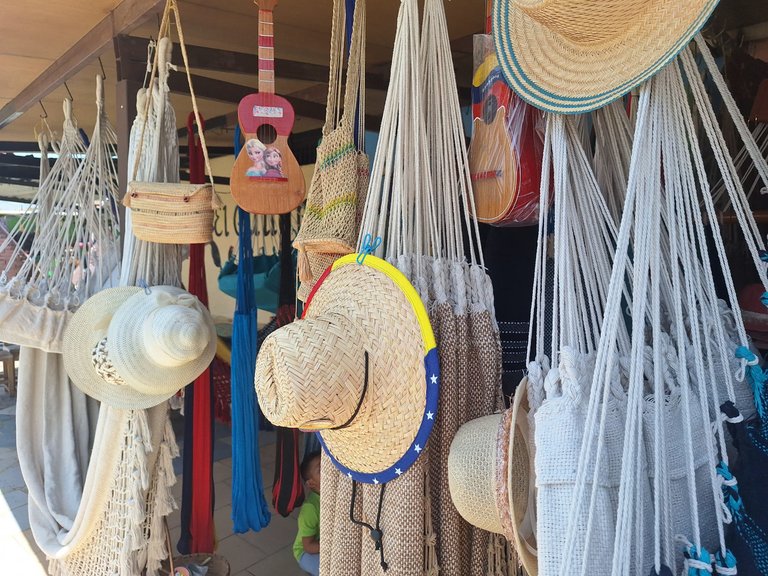
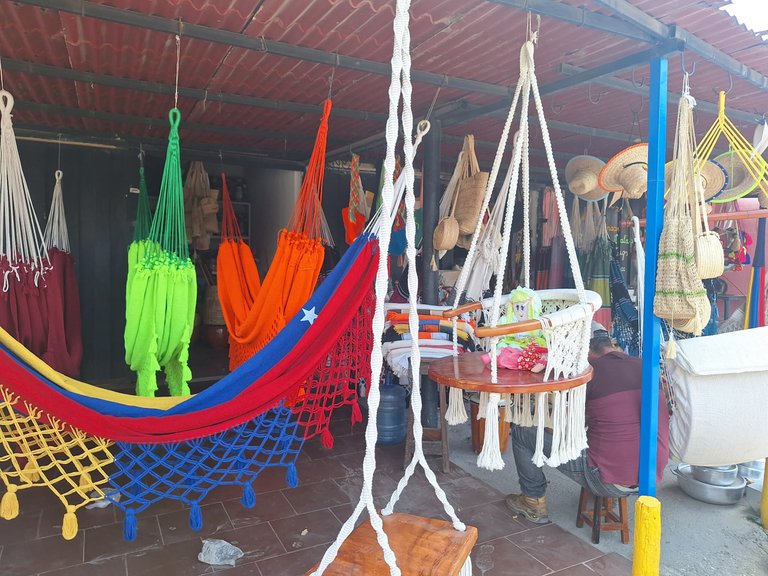
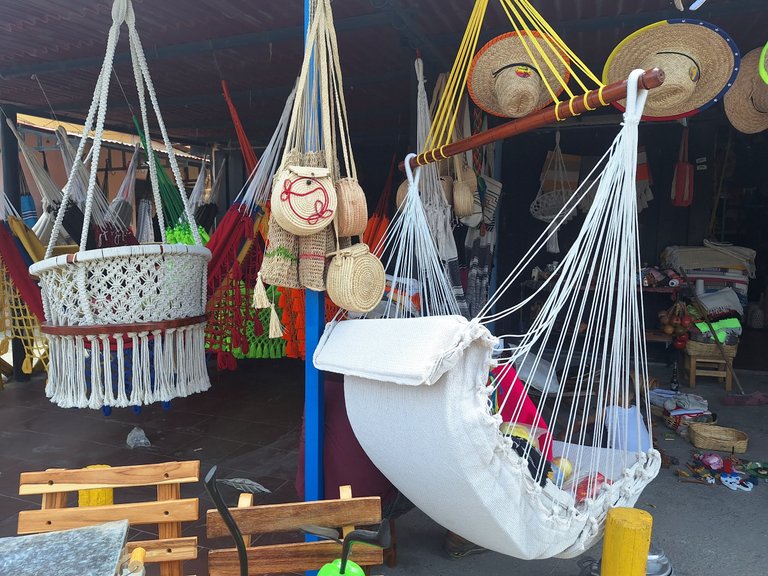
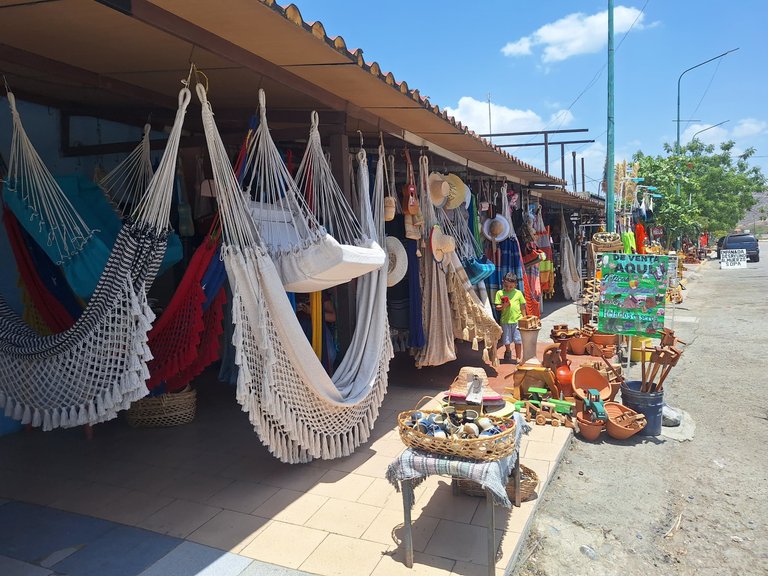
While walking around, I also came across dolls made of rags, something I didn't expect to see, as they are usually sold in the states of Trujillo or Mérida. My grandmother likes this kind of thing a lot. When I saw them, I remembered her.
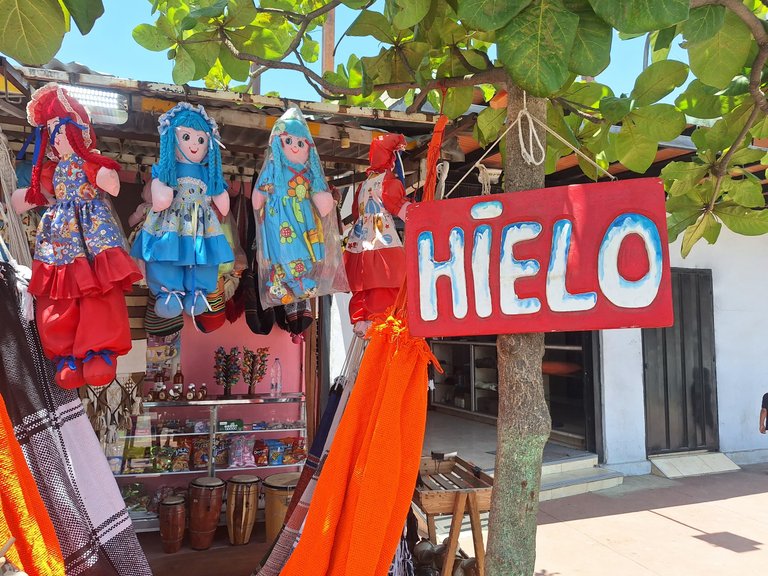
Tintorero is an enchanting and magical place. It makes you feel the magic of Venezuelan work and culture. It is a small town to buy souvenirs in, full of hard-working and polite people. There is a lot of warmth and kindness.
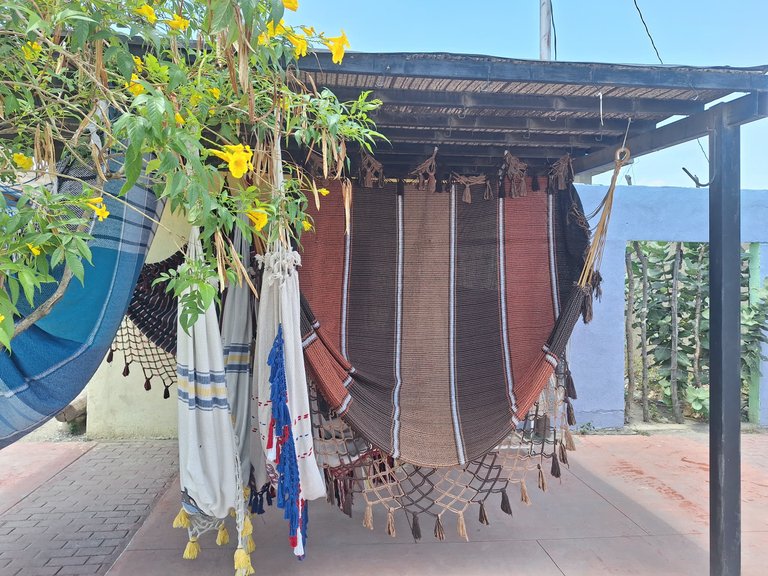
I finished my tour after buying a hammock, some souvenirs and things for the kitchen. This was one of the best moments; it allowed me to relax and connect with the culture of my country. Venezuela has beautiful places with an enveloping simplicity. Tintorero is one of them. I hope you can visit it.
Original content by @neruel. All rights reserved ©, 2024. Images: Samsung Galaxy A50. Translation: DeepL.
SPANISH VERSION (click here!)
Viajar siempre tendrá sentido para mí, es una construcción personal y también un momento memorable. Ahora bien, el estado Lara está dividido en 8 municipios, uno de ellos es Jiménez, donde se encuentra el pueblo artesanal de Tintorero. Para llegar a este lugar desde Barquisimeto, donde vivo, hay que tomar la carretera o troncal 17. Son unos 28 kilómetros de distancia, unos 37 a 40 minutos en carro particular aproximadamente.
No iba al pueblo artesanal de Tintorero desde que tenía unos 15 años de edad. ¿Mucho tiempo, cierto? En esta ocasión salimos a eso de las 10:40 am hora Venezuela.
Al recorrer la vía había una que otras alcabalas de policías y también estructuras hechas de cañas secas donde vendían budares y hornos para hacer arepas venezolanas (esto con menor preponderancia como hace años). A medida que el carro avanzaba iniciaba la transición de la ciudad al poblado rural y tradicional.
Tintorero es uno de los pueblos más áridos del Estado Lara, por ende, predomina la sequía, a pesar de que la tierra es rica para la siembra. Mi abuela me decía cuando era pequeño que los alrededores estaban siempre llenos de cultivos. Eso cambió.
Llegué a Tintorero después de las 11:20 am. Lo primero que hicimos fue estacionar el carro dentro de las calles del pueblo. Al ser miércoles, un día de semana, el pueblo era poco concurrido. No había mucha gente, tampoco era época de temporada de turistas o ventas altas.
Algo que destacaré de éste pueblo es la predominancia de la coloración, es demasiado colorido. Por ende, te envuelve. Me refiero a lo que se ve en la imagen siguiente:
El primer lugar que visitamos estaba rodeado de hamacas, sombreros y artesanías. En frente había unos bancos, casualmente pintados de color amarillo. La mayoría de las casas en éste pueblo las hicieron de barro o bajareque.
Al ser un pueblo artesanal se encuentra todo tipo de souvenir. En mi caso quería comprar una hamaca, pero no cualquiera. Mi deseo era adquirir una elegante, no me gustan las cosas que no sean con ésta característica.
En el primer comercio en el pueblo artesanal me atendieron muy bien, me mostraron artículos de todo tipo, había hasta sillas colgantes. Una belleza. Afuera de la casa colonial, había mucha mercancía hecha con delicadeza y cuidado.
Como me gustó mucho ése efecto de colocar la mercancía afuera de las casas, aproveché y tomé fotografías del perfil para que se vieran las fachadas coloridas del pueblo.
A medida que me adentraba en la primera tienda de artesanía quedaba sorprendido. Había muchas cosas hermosas, además al llegar al final te dirigía a una especie de plazoleta. Es decir, una especie de doble entrada.
La arquitectura del pueblo artesanal de Tintorero evidentemente es colonial, y del periodo de los primeros años de la república venezolana. Lo característico de éste pueblo es que se fundó entre finales del siglo XIX y principios XX, pero se utilizó la arquitectura precedente. ¿Interesante, cierto?
La historia de Tintorero se encuentra entrelazada con la ciudad del Tocuyo, una de las más antiguas de Venezuela, que debería ser patrimonio de la humanidad y tener un mayor índice de desarrollo, pero quedó suspendida en el tiempo. Al ser ciudades cercanas, existe una alta influencia en el tejido, la artesanía y la elaboración de cerámicas.
Al seguir recorriendo el pueblo también me encontré con artículos de cocina, tazas de café, budares y hornos para hacer arepas venezolanas. La arepa es el plato típico de mi país, se come habitualmente en el desayuno y cena. Por eso, es frecuente encontrar para hacerla en todas partes.
Visité otra tienda que tenía un aspecto más sobrio, pero donde abundaba mercancía de color marrón.
Seguí recorriendo el pueblo de Tintorero, y predominaba las artesanías, los sombreros, maracas y sillas de madera. Todo hecho minuciosamente.
Al caminar por los pasillos que entrelazan las casas coloniales, los techos poseen todo tipo de mercancías colgantes. Es un atractivo único de ése sitio, tiene su esencia y magia.
Las hamacas también se encuentran guindadas de manera lineal, los artesanos cuidan mucho la manera de percepción del producto. Se siente el toque artístico.
También noté que había muchos locales cerrados, es algo normal en un periodo donde hay poca afluencia de turistas, pero también está el costo del riesgo país. La crisis hizo que muchos locales cerraran, es lo que me dijeron algunos de los artesanos.
Una cosa impresionante es verse sumergido en los tejidos de gente trabajadora, sientes que estás en otro lugar. Me gustó mucho ese aspecto. Para precisarlo mejor, deben visualizar la siguiente imagen:
Al caminar también me encontré con muñecas hechas de trapo, es algo que no esperaba ver; ya que usualmente las venden en los estados Trujillo o Mérida. A mi abuela le gusta mucho éste tipo de cosas. Cuando las vi, la recordé a ella.
Tintorero es un lugar encantador y mágico. Te hace sentir la magia del trabajo y cultura venezolana. Es un pequeño pueblo para comprar souvenir, lleno de gente trabajadora y educada. Hay mucha calidez y bondad.
Terminé mi recorrido luego de comprar una hamaca, algunos recuerdos y cosas para la cocina. Éste fue uno de los mejores momentos, me permitió relajarme, y conectar con la cultura de mi país. Venezuela tiene lugares hermosos y con una sencillez envolvente. Tintorero es uno de ellos. Espero que tú lo puedas visitar.
Contenido original de @neruel. Todos los derechos reservados ©, 2024. Imágenes: Samsung Galaxy A50. Traducción: DeepL.
Posted Using InLeo Alpha
Congratulations, your post has been added to Pinmapple! 🎉🥳🍍
Did you know you have your own profile map?
And every post has their own map too!
Want to have your post on the map too?
Thank you very much for this. 😍
So many things and so much colour! It must be beautiful to walk around and look at so many beautiful handmade things. Thank you very much!❤️
It is beautiful to have the opportunity to walk through streets as wonderful as these. Buying a souvenir or two is also incredible.
Yes it is... I saw a butterfly over there, I loved it!
Hola @neruel, que fotografías tan hermosas.
También hace mucho que no visito Tintoreto y ahora que veo tu post me da ánimo 🥰 tiene mucha artesanía.
Quiero una hamaca, ¿sabes más o meno en que precio estaban?
Hola jessiencasa, gracias siempre dejando parte de lo que veo y visito aquí
Tenia años que no iba a Tintorero. Mucha artesania y cultura local.
Sí, yo compré una que salio en 40$. Hay otras en 20$, y 30$. Todo depende del tamaño y el material.
Que bueno, gracias 🥰
Apenas tenga la oportunidad voy a visitar el pueblo, es que las opciones de hamacas en el centro, es la misma en todos lados y pues allá es el lugar ideal para escoger una 😁
Espero que puedas ir pronto. Será muy divertido, sin lugar a dudas.
Congratulations @neruel! You have completed the following achievement on the Hive blockchain And have been rewarded with New badge(s)
Your next target is to reach 100000 upvotes.
You can view your badges on your board and compare yourself to others in the Ranking
If you no longer want to receive notifications, reply to this comment with the word
STOPCheck out our last posts: